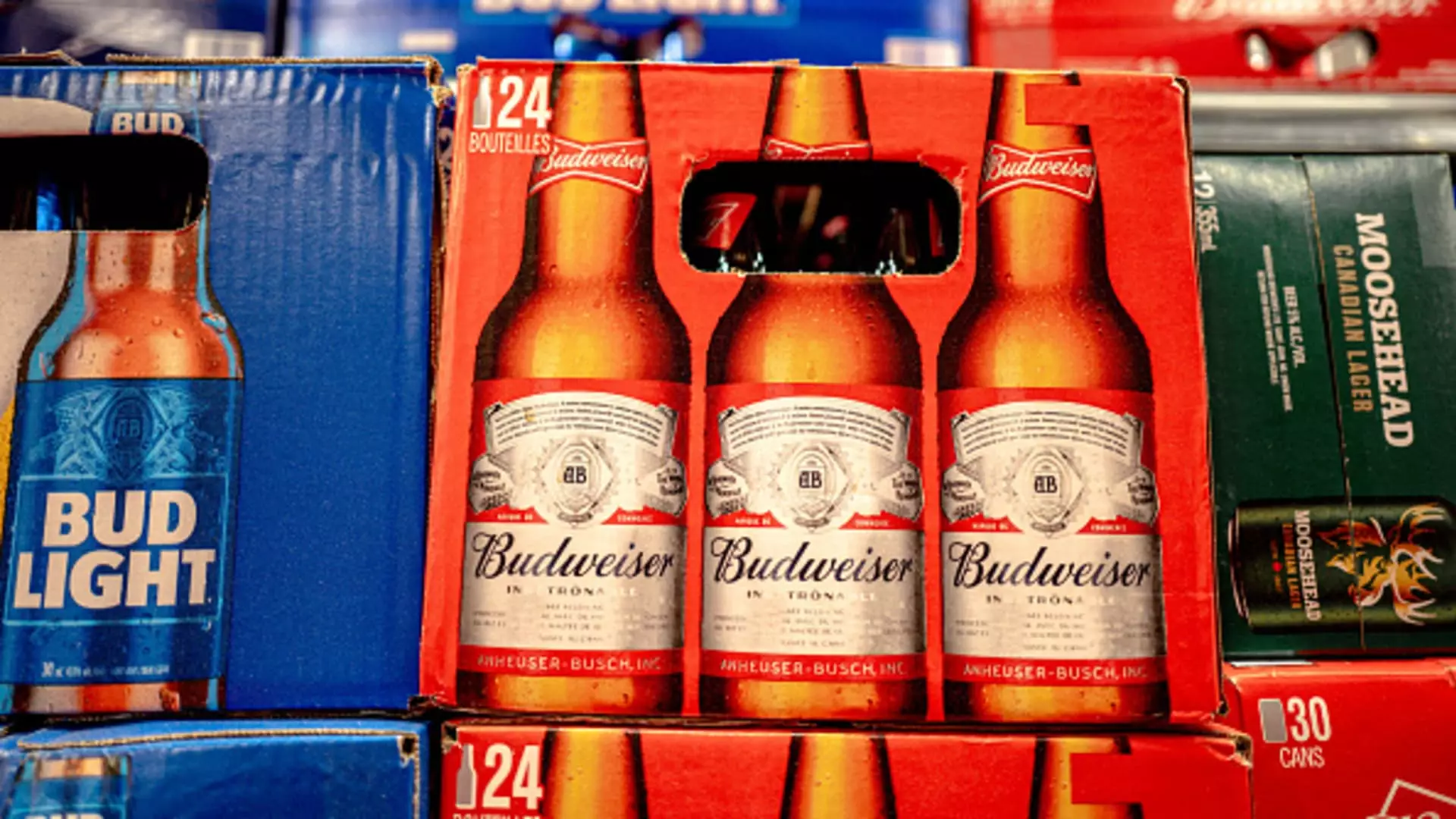AB InBev, the world-renowned brewing giant, has recently showcased a surprising resilience in its financial performance, even amidst a backdrop of declining sales volumes. The company, famed for its flagship brands such as Budweiser, Corona, and Stella Artois, reported that its fourth-quarter sales exceeded analysts’ expectations, elevating its shares by nearly 9%. This article will delve into AB InBev’s financial outcomes, explore the reasons behind the volume declines, and consider the broader market trends that are influencing the alcoholic beverage sector.
On Wednesday, AB InBev announced that its fourth-quarter revenue rose by 3.4%, reaching $14.84 billion, outperforming the consensus forecast of $14.05 billion set by LSEG analysts, who anticipated a 2.9% decline. This performance has led to a remarkable 8.5% jump in share prices. Even over the full fiscal year, total sales climbed by 2.7% to $59.77 billion, eclipsing the $59.3 billion anticipated by market analysts. Such financial resilience amidst an estimated 1.9% downturn in volume for the quarter and 1.4% for the entire year demands closer scrutiny.
The company attributed its volume declines primarily to lessened demand in pivotal markets such as China and Argentina. CEO Michel Doukeris characterized the situation in these regions as “very abnormal,” blaming diminished industrial productivity for negative consumer sentiment. It is critical to consider how these localized challenges could reverberate through AB InBev’s broader global strategy. Despite these obstacles, Doukeris expressed optimism, predicting a potential recovery in these markets as the fiscal year progresses.
It’s important to note that while beer sales have flagged, AB InBev’s non-beer products—including cocktail lines like Cutwater Spirits and Brutal Fruit Spritzer—are evidently performing well. This discrepancy calls for a thorough examination of changing consumer preferences, particularly the shift towards lighter drinks and ready-to-drink cocktails. Understanding these trends is pivotal for AB InBev as it navigates future market dynamics.
Looking ahead, Doukeris has cited foreign exchange instability as a primary concern for 2025, particularly in light of a strong U.S. dollar. However, he remains unconcerned about the long-term impacts of potential U.S. tariffs on the company’s operations. Doukeris has assured stakeholders that the firm is poised to implement various strategies to mitigate any cost-related challenges arising from market fluctuations.
The company aims to achieve EBITDA growth between 4% to 8% by 2025, a target that appears to align with industry averages following an impressive 10.1% EBITDA increase in the fourth quarter. These financial aspirations suggest that while AB InBev is facing unavoidable headwinds, it is strategically positioned to harness new opportunities and sustain revenue growth.
AB InBev is not alone in grappling with changing consumer habits, which are increasingly favoring moderation in alcohol consumption. An illustrative example can be seen in Carlsberg’s recent announcement, noting that one-third of its portfolio now consists of non-alcoholic beverages, a strategy designed to strengthen the brand against the backdrop of shifting preferences.
Doukeris acknowledges this global trend toward alcohol moderation, asserting that the demand for non-alcoholic options opens up consumption channels for broader audiences. A growing consciousness concerning health and wellness is influencing consumer behavior, elevating the appeal of lower-calorie beverages—non-alcoholic beers can often boast lower calorie counts compared to traditional soft drinks.
AB InBev’s robust revenue figures against declining volumes reflect a complex interplay of brand strength, market challenges, and shifting consumer preferences. As the company continues to focus on adaptability, including investing in non-alcoholic options, it remains dedicated to meeting consumer needs while maintaining its industry leadership. The future holds both challenges and opportunities, and how AB InBev navigates these unpredictable waters will be critical to its sustained success.


Leave a Reply